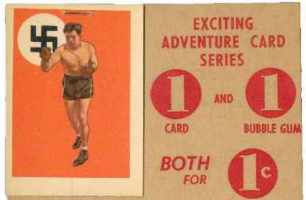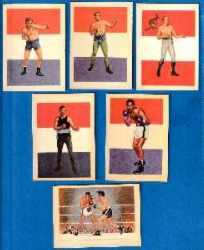1964 Topps #442 Pumpsie Green (Mets)


Please wander around the website for more info, prices, values & images
on vintage baseball, football, basketball, hockey, sport and non-sports cards.
1960 Fleer Baseball Cards |

1956 Adventure cards |

Team Autographed / Signed Baseballs (P2)
Team signed baseballs were the thing well before single-signed
balls exploded on the market.
Click for our current
Autographed/Signed Team Baseball inventory
What is a "Team Signed Baseball" ??? Simple answer: A ball with XXX signatures of a certain team for a certain year. What is difficult is the XXX. Baseball tons of roster moves make it nearly impossible to "Get Them All". Generally, team signed baseballs from early 1900's had 10 to 15 signatures, the 1940's that jumped to 18 to 25. Joyce Sports Research Collection (Notre Dame) says "signatures must include only members of a specific team from a specific year, and there must be some approximation of completeness." Not concrete but to me a "team ball" MUST have ALL the team's STARS (unless a rookie or in season trade) and in today's market at least 20, preferably more, and the manager.
Determining Age of Team Signed Balls
Note: You may be on that page now. |

Cabinet Card Were oversized trading cards featuring paintings issued mostly 1910-1915.
Card Show is a gathering of dealers & collectors looking to buy/sell/trade sports cards and memorabilia.
Card Stock is the material a card is printed on. Usually paper-based, today companies play with the card stock and sometimes it appears to be wood or leather or see-thru acrylic ...
Cello Pack is a card pack whose wrapper is see-thru plastic. Usually the top & bottom cards are seen. Unopened cello packs showing major stars and rookies sell for heavy premiums.
Centering is the balance of the borders: top/bottom & left/right. On perfectly-centered cards, top/bottom borders match as do the left/right borders. Centering is presented as a set of numbers & directions and often included with the grade. Perfectly-centered is "50/50 t/b" AND "50/50 l/r". As centering gets worse, one number increases and the other decreases. For example: 90/10 t/b is considered extremely off-center top to bottom. The numbers add up to 100 (50/50, 60/40, 90/10 ...).
Certificate Of Authenticity (COA) A document used to verify legitimacy of a collectible. NOTE: Keep in mind that COA's are easier to fake then autographs.
Common A card of a non-star player is considered a "Common" as opposed to cards of a star players or specialty/subset cards such as league leaders, teams cards, World Series cards...
Condition (Grade) Centering, corner wear, photo clarity, edges, creases, print flaws ... all combine to determine a card's condition or grade. Along with rarity/scarcity it is the major factor in a card's value.
Crease Defect usually caused by bending the card. Hard to see, or not, a crease lowers the card's grade (VG or lower) and greatly diminishes it's value.
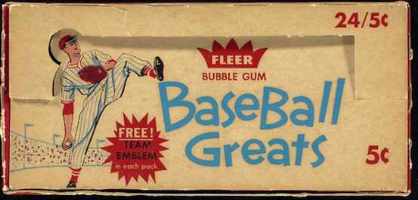 The 1960 Fleer baseball set contained 79 regular-sized cards
honoring the careers of Hall-of-Famers like Babe Ruth, Walter
Johnson, Lou Gehrig, Honus Wagner, Ted Williams and more !!!
The 1960 Fleer baseball set contained 79 regular-sized cards
honoring the careers of Hall-of-Famers like Babe Ruth, Walter
Johnson, Lou Gehrig, Honus Wagner, Ted Williams and more !!! 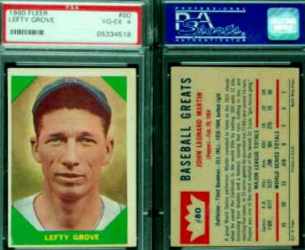
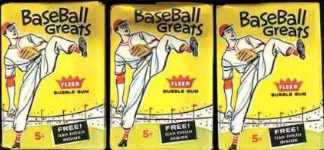
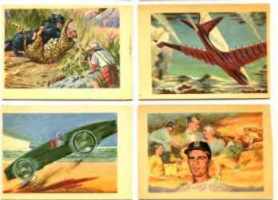 Issued by Gum Products Inc., this 100-card set
covered a variety of subjects. Featuring mostly non-sport like
military or wild life, it also had a few sports related cards.
The most famous being Max Schmeling's card, removed very early from
the set for featuring the Nazi symbol, making it by far the
scarcest and most expensive in the set.
Issued by Gum Products Inc., this 100-card set
covered a variety of subjects. Featuring mostly non-sport like
military or wild life, it also had a few sports related cards.
The most famous being Max Schmeling's card, removed very early from
the set for featuring the Nazi symbol, making it by far the
scarcest and most expensive in the set. 